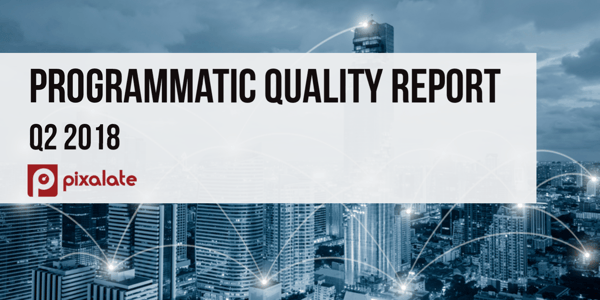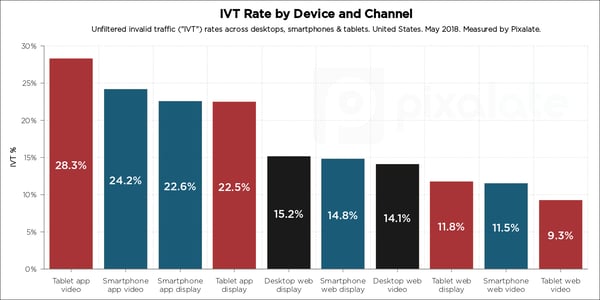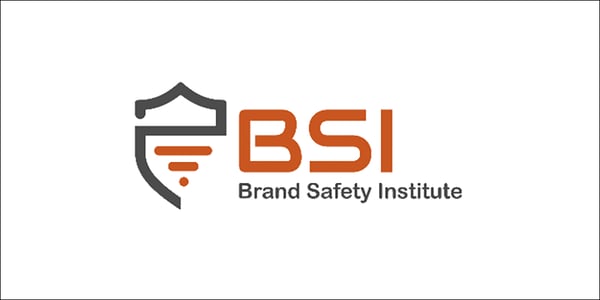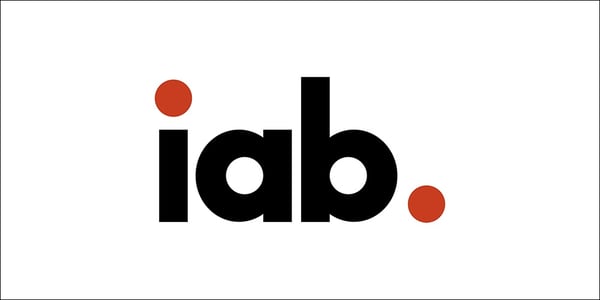
This week's review of ad fraud and quality in the digital advertising space.

Pixalate this week released the Q2 2018 Programmatic Quality Report: North America. This comprehensive analysis of traffic quality details the state of invalid traffic (“IVT”) across desktop and mobile devices, including current IVT trends within mobile apps. The report also contains an update on the state of viewability in the programmatic marketplace.

Pixalate has released updated invalid traffic (“IVT”) rates from the United States from May 2018 — and our analysis reveals that ad fraud remains a large problem for both web and in-app advertising. Mobile in-app is the riskiest, and "the problem is extrapolated because marketers have a general lack of visibility into in-app advertising," the blog reads. "So few companies are able to detect, monitor, and prevent ad fraud in-app, which creates an atmosphere ripe for exploitation."

"Like any ordinary business, fraudsters flow to where the money is," wrote eMarketer. "And because advertisers are putting more of their budgets into video, fraudsters are flocking to the platform, as demonstrated by a recent experiment by The Guardian."
The article continued: "The Guardian and its research partners found that when ads.txt filters were applied to their ad buys, there were no discrepancies between what they bought and what ended up coming back to The Guardian. But when ads.txt filters were not applied, 1% of display ad spend and 72% of video ad spend went to unauthorized programmatic platforms."

This week, the Brand Safety Institute (BSI) launched "with the mission of helping advertisers, agencies and publishers get smart about managing brand safety issues," wrote AdExchanger. The article added: "BSI plans to accomplish its goal through a certification program designed to train and accredit ad industry execs on the finer points of brand safety, such as ad quality, how to vet partners, ad placement and content analysis and understanding ad fraud and malware."

"The revised OpenRTB 3.0 spec released Tuesday makes major changes to the programmatic standard to stamp out bad ads and fraud. The IAB Tech Lab’s new spec is now open for public comment for 60 days," reported AdExchanger. "[B]ad actors exploited the [older] standard’s holes, leading to domain spoofing, location fraud, in-banner video and other issues," the article noted.
Sign up for our blog to stay updated with new stats, trends, and analysis of digital ad fraud.
*By entering your email address and clicking Subscribe, you are agreeing to our Terms of Use and Privacy Policy.
These Stories on Weekly Recaps
*By entering your email address and clicking Subscribe, you are agreeing to our Terms of Use and Privacy Policy.

Disclaimer: The content of this page reflects Pixalate’s opinions with respect to the factors that Pixalate believes can be useful to the digital media industry. Any proprietary data shared is grounded in Pixalate’s proprietary technology and analytics, which Pixalate is continuously evaluating and updating. Any references to outside sources should not be construed as endorsements. Pixalate’s opinions are just that - opinion, not facts or guarantees.
Per the MRC, “'Fraud' is not intended to represent fraud as defined in various laws, statutes and ordinances or as conventionally used in U.S. Court or other legal proceedings, but rather a custom definition strictly for advertising measurement purposes. Also per the MRC, “‘Invalid Traffic’ is defined generally as traffic that does not meet certain ad serving quality or completeness criteria, or otherwise does not represent legitimate ad traffic that should be included in measurement counts. Among the reasons why ad traffic may be deemed invalid is it is a result of non-human traffic (spiders, bots, etc.), or activity designed to produce fraudulent traffic.”

